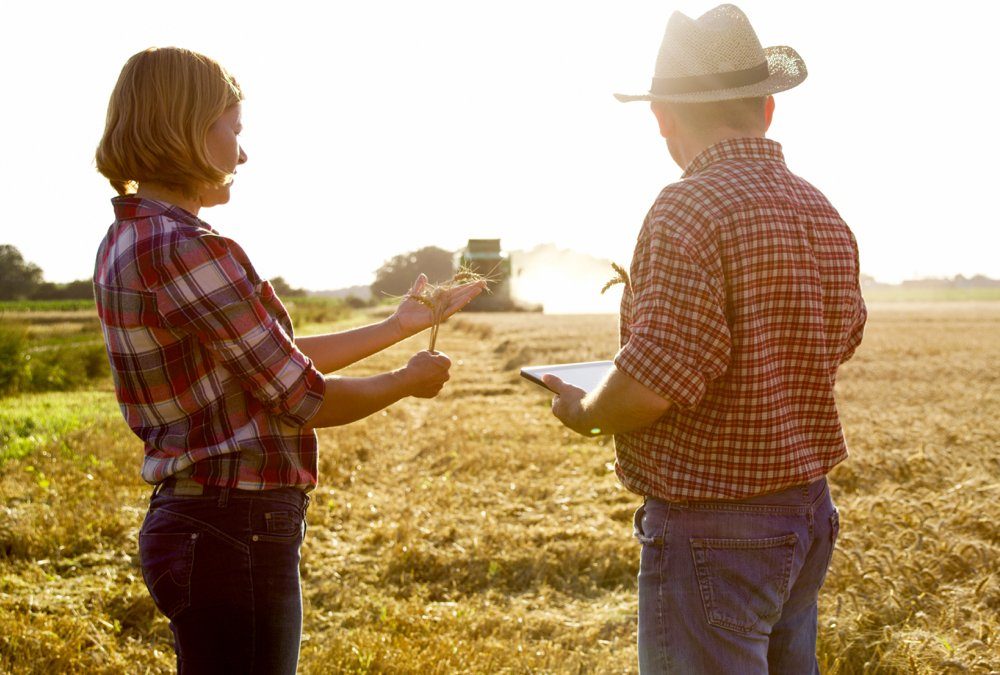How the private sector can boost agriculture’s role in carbon markets

Agriculture is emerging as a key sector for generating carbon offsets that will help companies and countries meet their net-zero targets. Carbon markets are also a pathway to incentivize farmers to adopt practices that reduce greenhouse gas emissions and enhance carbon storage in soils and vegetation.
In Canada, Alberta farmers were the first to gain options to sell carbon offsets, back in the mid-2000s. Since then, agriculture’s role in carbon markets has evolved unevenly across the country. For most Canadian farmers, accessing carbon markets to sell carbon offsets has been a pending, abstract option. Recently, however, companies as diverse as IBM, The North Face, Boston Consulting and Barclays have signalled their willingness to invest in GHG reductions from agriculture to offset their own footprints, and regulatory frameworks now being developed suggest that the limited options for Canadian farmers to participate in carbon markets may soon multiply.
Private sector leadership: Improving conditions for agriculture in carbon markets
The private sector has an important role to play in fostering a carbon market that encourages responsible investment and catalyzes meaningful engagement in agricultural offset projects. Empowering farmers to decide how and if they want to participate in carbon markets starts by addressing knowledge gaps within Canada’s agricultural sector on the opportunities, limitations and requirements of carbon markets. A growing number of agri-food companies and agribusinesses are educating farmers about how to participate in carbon markets and pilot programs; however, challenges remain.
A recent McKinsey report highlighted some of the key problems with voluntary carbon markets. “When selling those credits, suppliers face unpredictable demand and can seldom fetch economical prices. Overall, the market is characterized by low liquidity, scarce financing, inadequate risk-management services, and limited data availability.”
The report, however, notes that private sector actors can help by sending clear demand signals to offset suppliers, which could be supported through the development of guidelines and consensus among companies on the appropriate use of carbon credits to offset emissions.
To make carbon markets more accessible to farmers, new initiatives promise to streamline transactions and drive down verification costs, including efforts to develop networks of soil-health monitoring technologies, such as the U.S.-based OpenTEAM community. Public-private-people partnerships will be key to driving innovation and scaling robust soil carbon measurements.
Upcoming options for Canadian farmers to participate in carbon markets
In addition to the existing cap-and-trade opportunities in Alberta and Quebec, there are also growing voluntary carbon market opportunities for agriculture. This is driven in part by the increasing demand for land-based carbon offsets from companies such as Maple Leaf Foods, Cargill and Shopify seeking to offset their GHG emissions.
In the voluntary market space, Canadian agriculture recently gained greater access to protocols that could expedite the development of offset projects, including the Canada Grassland Protocol on Climate Action Reserve’s voluntary market registry, and the Improved Agricultural Land Management Methodology overseen by the Verified Carbon Standard program.
Put forward in early March, Canada’s Federal Greenhouse Gas Offset System is in its first round of developing offset protocols that will set out a consistent approach for quantifying reductions in GHG emissions for given project types. The first protocols will include one key regimen for farmers: the Enhanced Soil Organic Carbon (ESOC) protocol. If successfully implemented, ESOC will allow Canadian farmers to be compensated for adopting practices that enhance carbon storage.
While recent developments in carbon markets present exciting opportunities, barriers for some farmers remain, including the costs associated with verification. Forming partnerships with established project developers, who would receive a credit “split,” is one route to overcoming financial obstacles.
Although much uncertainty remains in the evolving carbon markets, these options are progressing at unprecedented scale and speed. This trend underlines the need for action to foster responsible investment in agricultural carbon-offset projects, integrate measuring and monitoring technology, and build greater awareness of the opportunities and challenges for farmers to engage.
The existing landscape of carbon markets in Canada
- Farmers in Alberta are enrolled in multiple offset protocols including the conservation cropping protocol, where they receive carbon credits for reducing tillage. According to the provincial government, more than 600,000 tonnes of carbon per year have been offset by the conservation cropping protocol. (Like all offset protocols, the conservation protocol has an expiry date, which is set for December 31, 2021.)
- Quebec linked its cap-and-trade system to California’s in 2014, creating the largest carbon market in North America. So far, however, no agricultural offset projects have been developed, although Quebec farmers are eligible for carbon credits to implement anaerobic digesters. The province is currently analyzing several new protocols, including development of its own NERP system.
- In Nova Scotia, farmers currently do not have access to offset programs under the cap-and-trade system, although the provincial government is reviewing offset development.
- In Ontario, the Output-Based Pricing System (OBPS) timeline might best be described as a rollercoaster ride. In 2017, Ontario signed an agreement to link the province’s cap-and-trade system to Quebec and California’s system, but that was scrapped with the change of government in 2018 – resulting in the federal OBPS coming into effect.
- In fall 2020, Ontario and New Brunswick received reluctant approval from Ottawa for their own carbon pricing systems for heavy emitters, but Ontario doesn’t seem likely to offer agricultural offset opportunities for the foreseeable future. Still, Ontario farmers will be able to participate in the federal GHG Offset System if they qualify, once the full protocols are developed.
Lisa Ashton is a PhD candidate in the Department of Geography, Environment and Geomatics at the University of Guelph. Shahira Esmail is the director of global consulting at Radicle. This first appeared in Corporate Knights.
Source: Farmtario.com

